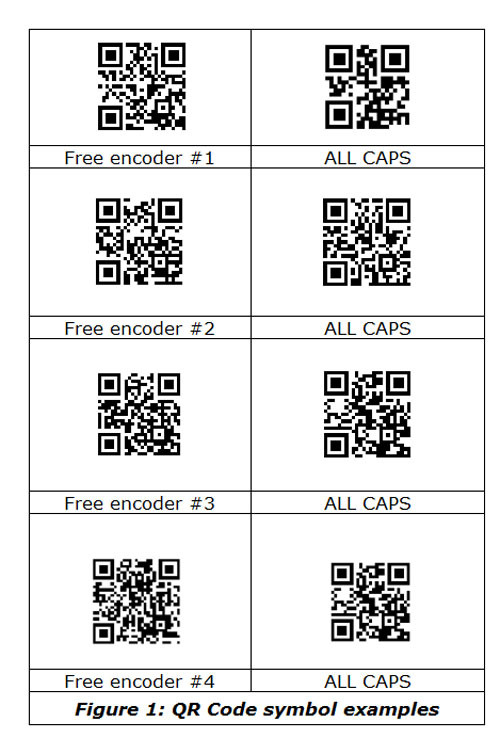From SCDigest's OnTarget e-Magazine
June 2, 2011
RFID and Auto ID News: Use of QR Code is Exploding, but the Fast and Easy Approach May Lead to Problems
Time for More Discipline in Code Creation; Can QR Code Linking to Web Pages Provide Benefits in Supply Chain Apps as Well?
SCDigest Editorial Staff
QR code, a two-dimensional bar code symbology, is exploding in usage, driven by social media and smart phones.
The QR code symbology is ideally suited to encoded web URLs, triggering a wide variety of applications, from magazine ads containing the symbol for readers to link to more information or coupons, to in-store QR symbols that can allow cell phone users with scanners to access the same types of information, compare prices, and more.
SCDigest Says: |
 |
| Marketers may "test" the symbol for readability by using a few cell phones in the office before sending the symbol image on to others for reproduction in store or elsewhere. Readability may not prove so easy in the real world applications.
|
|
What Do You Say?
|
|
|
|
While some commercial/industrial applications for QR code already exist, SCDigest believes there is a lot of additional opportunity for QR code adoption to trigger URL access on the shop or DC floor. For example, a QR code could be used on a work order "traveler" that could be scanned on a manufacturing line to bring up assembly instructions or a repair history. QR symbols on the DC floor could be used to trigger near real-time reports on facility or individual worker productivity.
But according to long-time auto ID pundit Bert Moore, who manages communications for AIMGlobal, the auto ID trade association, among other duties, the rapid ascent of QR code has led to a number of dubious practices, many of which are tied to either free web-based encoders or the desire of marketers to put the company logo in the QR symbol by changing the colors of the right pixels among all the black dots.
In a recent column in an AIMGlobal newsletter, Moore notes the incredible penetration of QR code in just few years.
"Without question, QR Code is the 2D symbology of choice for business-to-consumer and social media. QR Code symbols are appearing in magazines, newspapers, on print ads, brochures, flyers and even billboards and television," Moore notes. "They're also showing up on business cards for business-to-business applications."
The problem? Poor quality, Moore says.
Many unusable QR symbols are being produced, he says, resulting from a number of causes, including variations in encoders, poorly-produced "branded" symbols, bad printing/lack of verification, enigmatic symbols, and variations in the quality of decoders/cameras.
Moore conducting an interesting experiment. He tried to encode the AIMGlobal URL (http://www.aimglobal.org) in both lower case and upper case modes, using four different free web encoders.
The results are shown below. Notice the dot pattern differences in the symbols across the printed symbols.

Source: Bert Moore/AIMGlobal
Why the differences? They are largely the result of different levels of error correction, which determines how much of a symbol can be damaged or otherwise unreadable and still have the full encoding be readable by scanners.
(RFID and AIDC Story Continued Below)
|